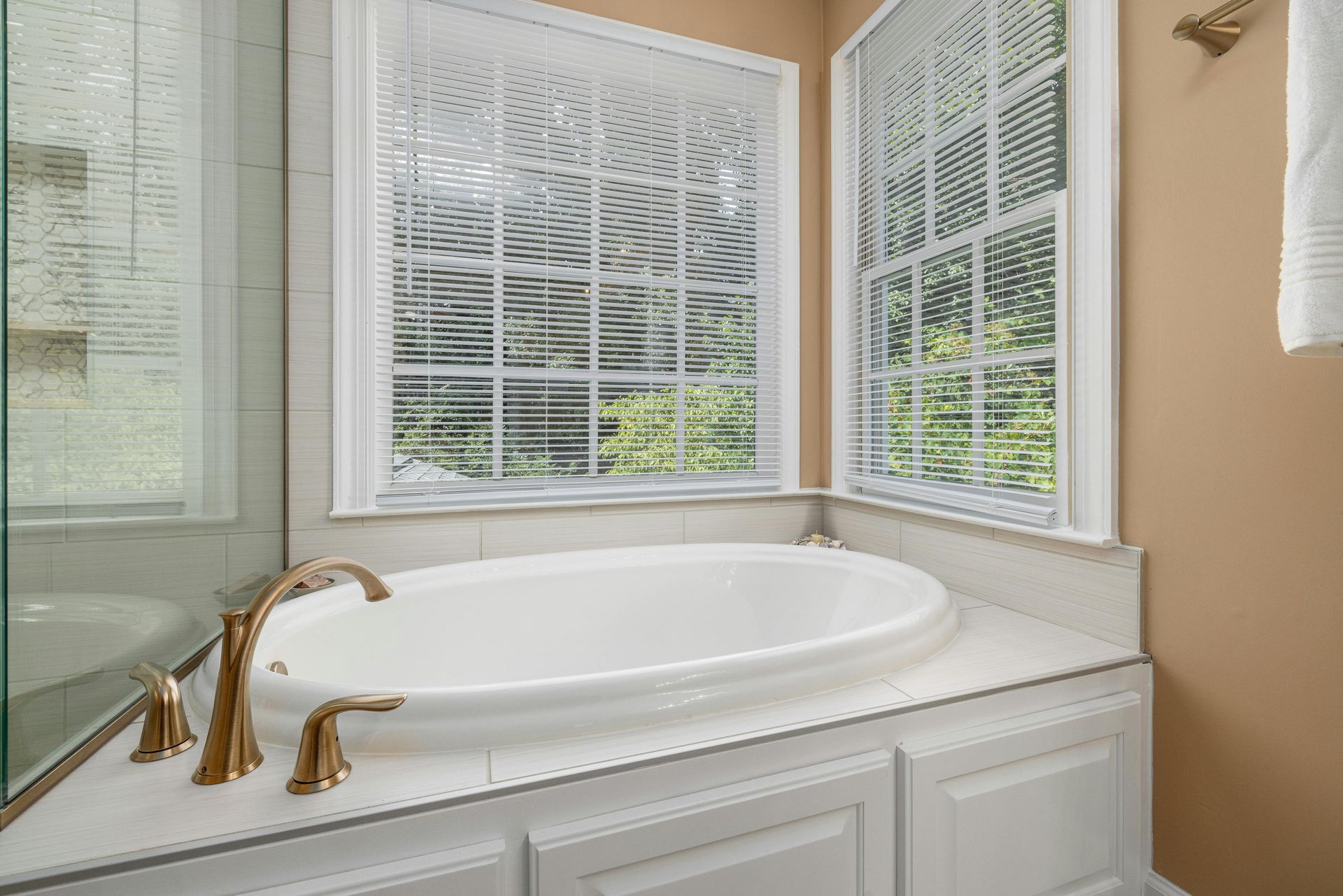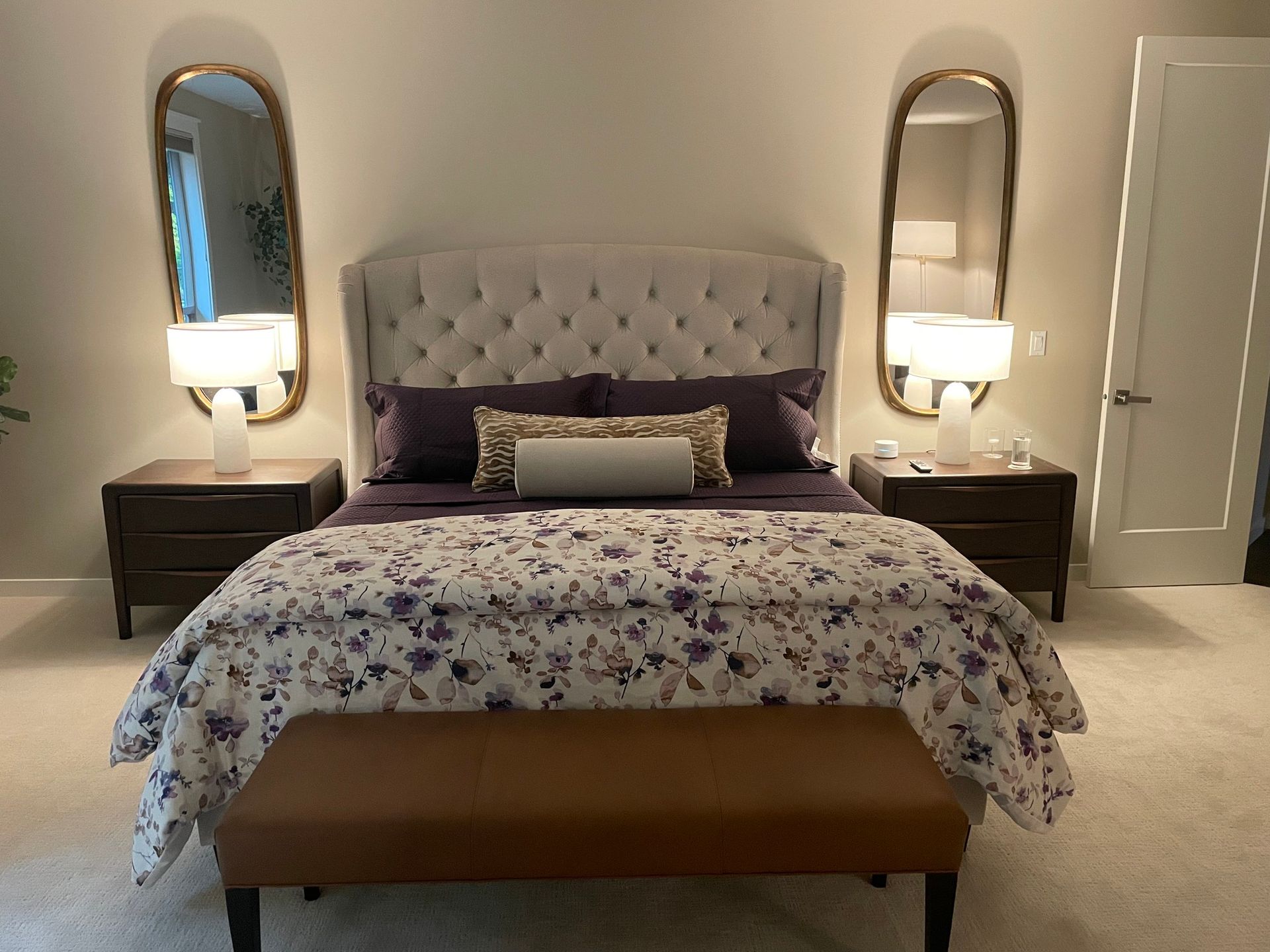7 Best Characteristics of Bathroom Blinds for Privacy, Moisture, and Style

Have you ever hesitated to install blinds in your bathroom, worrying they might warp from the humidity, grow mildew, or offer little privacy? You’re not alone.
Bathrooms are one of the trickiest rooms to furnish—especially when it comes to window treatments. Yet, the right bathroom blinds can transform the space from vulnerable to stylish and practical.
So, can you have blinds in a bathroom? Absolutely—as long as you choose the right kind. In this guide, we’ll explore the 7 most important characteristics of high-performing bathroom window blinds and how they tackle real-life bathroom challenges like moisture, privacy, and aesthetics.
Whether you're remodeling or simply upgrading, this expert-backed advice will help you make a confident decision that complements both your lifestyle and your space.
At Pugerudes, we help local homeowners find custom solutions that don’t just look good—they work beautifully where it matters most.
1. Moisture Resistance is Non-Negotiable
Bathrooms naturally produce humidity and condensation, and without the right materials, that moisture can quickly become your blinds’ worst enemy. Warped wood, moldy fabric, or bubbling finishes are all signs of blinds that just aren’t built for the job.
That’s why one of the best characteristics of bathroom blinds is their ability to resist moisture. Materials like vinyl, faux wood, and aluminum are designed to withstand high humidity. They won’t swell, crack, or attract mildew.
According to a study from the National Center for Biotechnology Information (NCBI), prolonged exposure to indoor dampness is associated with mold growth and potential respiratory issues—making moisture-resistant blinds not only a practical choice but a health-conscious one, too.
2. Total Privacy Without Sacrificing Light
No one wants to feel exposed in a bathroom, and yet blocking all the natural light can make the space feel cold or cramped. The ideal blinds for bathroom windows strike the perfect balance—offering full coverage when needed, but still allowing in soft, diffused daylight.
Top-down, bottom-up styles and adjustable slats let you control visibility and light flow with ease. Textured finishes or privacy sheers can also offer visual comfort while maintaining a clean, airy look.
The key is choosing a style that doesn’t force you to choose between privacy and comfort—because with the right window treatment, you can absolutely have both.
3. Easy to Clean and Maintain
Bathrooms collect dust, splashes, and steam more than most other rooms in the home. That’s why cleaning and upkeep should always be part of your buying decision.
Smooth-surface blinds like vinyl and aluminum are incredibly easy to wipe down with a cloth—no special treatments or tools required. Avoid fabric styles that may trap moisture or dust unless they are explicitly labeled washable or moisture resistant.
Cordless or motorized blinds are also easier to maintain because they reduce grime buildup around pulls and cords. The less effort required to keep your blinds looking fresh, the more likely you’ll enjoy them long term.
4. Aesthetic Versatility to Match Your Space
Today’s bathroom window blinds are more than functional—they’re design elements in their own right. Whether your space leans classic, modern, spa-like, or coastal, there’s a blind style that complements your aesthetic goals.
Neutrals like white, gray, and wood tones help tie the room together without clashing with tile, fixtures, or decor. Meanwhile, sleek lines and subtle finishes allow your blinds to blend in when retracted and make a statement when drawn.
For a more elevated finishing touch, consider pairing your blinds with custom toppers or explore stylish cornice board ideas that add architectural flair without overwhelming the space.
5. Proper Fit for Smaller or Odd-Shaped Bathroom Windows
Many bathrooms have unique or compact window shapes—arched transoms, high privacy windows, or narrow vertical panes. This makes off-the-shelf blinds difficult to size correctly and prone to gaps that compromise privacy and moisture protection.
Custom-fit blinds are a smart investment, ensuring your window treatment hugs the frame perfectly. A precise fit helps prevent light leaks, water drips, and draft exposure, all while looking beautifully intentional.
At Pugerudes, we offer tailored sizing that accounts for even the most unconventional window shapes, so your bathroom looks professionally finished, no matter its quirks.
6. Safety Features for Families
If your bathroom is used by kids, seniors, or guests, safety should be a top priority. Loose cords and tangled strings aren’t just unsightly—they can be dangerous in a high-traffic area with slick floors and wet hands.
Cordless blinds or motorized lift systems remove the risk altogether. With one-touch adjustments or remote control functionality, these options are not only safer, they’re sleeker too.
Whether you're outfitting a guest powder room or a busy family bath, safer options bring peace of mind without compromising on design.
7. Long-Term Durability Backed by Quality
When shopping for bathroom blinds, think beyond the sticker price. Low-quality materials may discolor, degrade, or warp in less than a year—especially in a bathroom’s harsh environment. Meanwhile, well-made blinds will hold their shape, color, and function for years with minimal upkeep.
Durability also means support from a trusted local provider. At Pugerudes, we stand behind the quality of every blind we install. Our knowledgeable team can help you choose a long-lasting solution that blends craftsmanship with practicality—something you won’t find in a generic online order.
Frequently Asked Questions About Bathroom Blinds
Can you have blinds in a bathroom?
Yes—when made with water-resistant materials like faux wood, aluminum, or vinyl, blinds are perfectly suited for bathroom use.
What kind of blinds are best for bathrooms?
Faux wood and vinyl blinds are top picks due to their durability, moisture resistance, and easy maintenance. They also come in styles that prioritize privacy.
Are fabric blinds good for bathrooms?
Only if they are explicitly designed for high-humidity areas. Otherwise, fabric blinds can trap moisture and become prone to mold and mildew.
Ready to Upgrade Your Bathroom Blinds?
Choosing the right bathroom blinds can make all the difference in both how your space feels and functions. From resisting moisture to matching your design goals, each of these characteristics plays a vital role in ensuring your blinds perform well in the most humid room of the house.
If you're ready to invest in bathroom window blinds that offer style, privacy, and lasting durability, contact Pugerudes today. Our expert team is here to help you find a tailored solution that fits your windows—and your life—perfectly.




